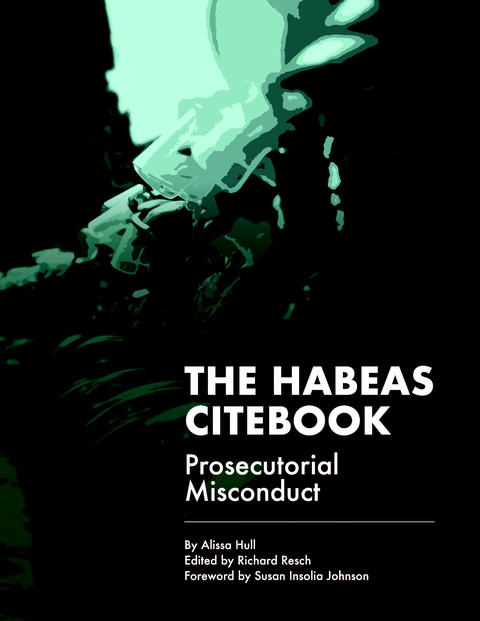DEA Used Decades of Warrantless Phone Data in Building Parallel Construction Cases
by Steve Horn
After a years-long federal court dispute, the Electronic Frontier Foundation (“EFF”) and Electronic Privacy Information Center (“EPIC”) won a Freedom of Information Act (“FOIA”) lawsuit, which forced the U.S. Drug Enforcement Administration (“DEA”) to fork over hundreds of pages of records revealing the machinations of the “Hemisphere” warrantless surveillance program.
Hemisphere, a partnership with AT&T, allowed the DEA access to phone records and “burner phone” data to aid the agency in building criminal drug cases. Often, the telecommunications giant and agency have done so utilizing “parallel construction” [See: CLN, May 2018, p.1], gaining massive tranches of data from vacuuming up records without a Fourth Amendment-required warrant and then citing other evidence when bringing forth indictments and criminal complaints while remaining silent about the initial data collection as the source leading to the ostensibly untainted evidence introduced in the case.
The vast majority of the records obtained by EFF were redacted by the DEA, but one record left unredacted reveals that AT&T desired to keep the name of the program a secret in court filings pertaining to the program.
“[W]e would prefer that the information obtained from the unit not be used in any affidavit going to the court,” reads the email penned by an ATT attorney. “Obviously, the more ... information obtained from the unit is used in court filings, whether attributed or not, the more likely the existence of the unit will become more widely known, and we would prefer distribution of that knowledge be limited to the extent possible.”
The data forked over by AT&T dates back to 1986, over three decades of records secretly shared between the company and the federal government to help bring criminal cases. Data sharing hubs exist in some of the biggest metropolitan areas of the country, EFF explained in an article about the records it received.
“AT&T embeds employees with police agencies in at least three hubs: Los Angeles, Houston, and Atlanta. These employees run the software that searches and analyzes AT&T [sic] massive phone database,” explained the organization. “Cops (usually working drug cases) from around the country contact their regional hub to get the records, and federal officials can query Hemisphere without first getting permission from a judge. The system was reportedly especially useful for tracking people when they switched phones.”
Snowden Era Revelation
The existence of Hemisphere first came to light via an investigative story published by The New York Times in 2013, published in the aftermath of the publishing of documents provided by National Security Agency (“NSA”) whistleblower Edward Snowden that year given to both The Guardian and The Washington Post. Those documents opened up a worldwide debate about mass government surveillance, document retention, and impacts it could have on the U.S. criminal justice system and civil liberties protections.
Hemisphere, by juxtaposition, has received less limelight than the NSA, likely owing to the fact it has kept most details about the program secret and that a whistleblower has yet to come forward to reveal insider information. But Hemisphere arguably has had more far-reaching impacts and a longer reach with regards to mass surveillance.
“The N.S.A. stores the data for nearly all calls in the United States, including phone numbers and time and duration of calls, for five years,” wrote The New York Times. “Hemisphere covers every call that passes through an AT&T switch — not just those made by AT&T customers — and includes calls dating back 26 years, according to Hemisphere training slides bearing the logo of the White House Office of National Drug Control Policy. Some four billion call records are added to the database every day, the slides say; technical specialists say a single call may generate more than one record. Unlike the N.S.A. data, the Hemisphere data includes information on the locations of callers.”
The program began in 2007 and the documents published by The New York Times came via a records request obtained from another policing agency, one done not by The Times, but by a peace activist based in Port Hadlock, Washington. Prior to The Times’ story, the existence of Hemisphere was kept secret on purpose. One document obtained by the newspaper dictated that DEA officials “never refer to Hemisphere in any official document.”
Advocacy groups aren’t the only ones who have decried the Hemisphere program. Not long after The New York Times published its piece, the University of Cincinnati Law Review published a scathing reaction to the program’s existence.
“The war on drugs has already led to new interpretations of the Fourth Amendment that stretch the limits of the Constitution. Forty-two years and over one trillion dollars later, the United States is no closer to winning the war on drugs,” the article charged. “Changes in penalties and law enforcement tactics have not had a significant effect on drug use, and the multi-million dollar Hemisphere project has not changed the outcome during the six years it has been active. Hemisphere has only succeeded at eroding Fourth Amendment protections while bloating the federal budget.”
Special Operations Division ‘Darkside’
A couple of months before The New York Times piece, Reuters reported that the DEA has an entire unit dedicated to building parallel construction cases known as it Special Operations Division, or SOD.
“Two dozen partner agencies comprise the unit, including the FBI, CIA, NSA, Internal Revenue Service and the Department of Homeland Security,” wrote Reuters. “It was created in 1994 to combat Latin American drug cartels and has grown from several dozen employees to several hundred.”
A document obtained by Reuters specifically refers to what SOD does as a form of building cases via parallel construction.
“Parallel construction is a law enforcement technique we use every day,” an anonymous official told Reuters. “It’s decades old, a bedrock concept.”
Defense attorneys interviewed by Reuters slammed the existence of SOD, saying it flies in the face of criminal defendants having access to pretrial discovery information detailing how a case was brought against him or her.
Nathaniel Burney, a criminal defense attorney and former prosecutor for the Manhattan District Attorney’s office, said that these “dark side” maneuvers — as he described them — are commonplace not only within the Special Operations Division, but throughout law enforcement at-large.
“When I was dealing with them, back in the late ’90s and early ’00s, we in my office only half-jokingly called them ‘the dark side,’” wrote Burney, former assistant to U.S. Supreme Court Chief Justice Warren Burger, in a 2013 blog post. “It was well understood that you couldn’t build a case off of their information.... And to be fair, the SOD folks themselves were very clear in their instructions: Their information was not to be used as evidence. It was only to help us figure out what we were looking at in an investigation, and let us know about other things we might want to be looking for.”
Indeed, a story published in 2016 by the online publication The Daily Beast revealed that AT&T specifically marketed Hemisphere as a way to do parallel construction outside the bounds of both transparency and the Fourth Amendment.
“The Government agency agrees not to use the data as evidence in any judicial or administrative proceedings unless there is no other available and admissible probative evidence,” reads an AT&T contract document obtained by the publication.
“This document here is striking,” EFF attorney Adam Schwartz told The Daily Beast. “I’ve seen documents produced by the government regarding Hemisphere, but this is the first time I’ve seen an AT&T document which requires parallel construction in a service to government. It’s very troubling and not the way law enforcement should work in this country.”
Hemisphere for Sale
So prized is the AT&T-DEA Hemisphere database that sales of it have begun to police departments across the country.
“Sheriff and police departments pay from $100,000 to upward of $1 million a year or more for Hemisphere access. Harris County, Texas, home to Houston, made its inaugural payment to AT&T of $77,924 in 2007,” wrote The Daily Beast. “Four years later, the county’s Hemisphere bill had increased more than tenfold to $940,000.”
The extent of the Hemisphere program, and how many criminal complaints it played a role in, remains unclear. But the DEA stated in its own PowerPoint presentation acquired by the EFF that it sucked in some four billion records per day under the aegis of Hemisphere.
No indications exist that the program has slowed down, either, only having rebranded under the more innocuous-sounding name, Data Analytical Services. Only time and further investigation will tell the full reach of the program on criminal justice system defendants, as well as on the millions of innocent citizens caught up in the dragnet surveillance.
---
Sources: eff.org, reuters.com, nytimes.com, thedailybeast.com, web.archive.org, burneylawfirm.com, washingtonpost.com, theguardian.com, uclawreview.org, criminallegalnews.org, documentcloud.org
As a digital subscriber to Criminal Legal News, you can access full text and downloads for this and other premium content.
Already a subscriber? Login





